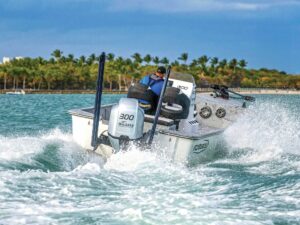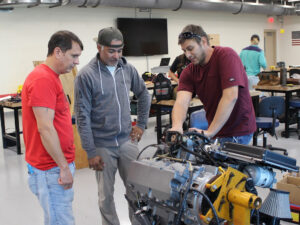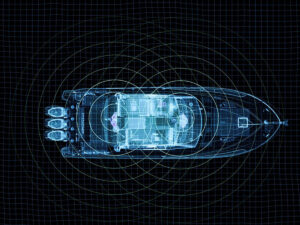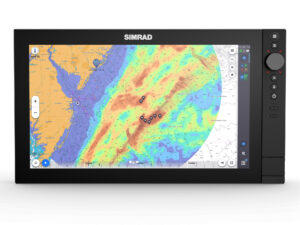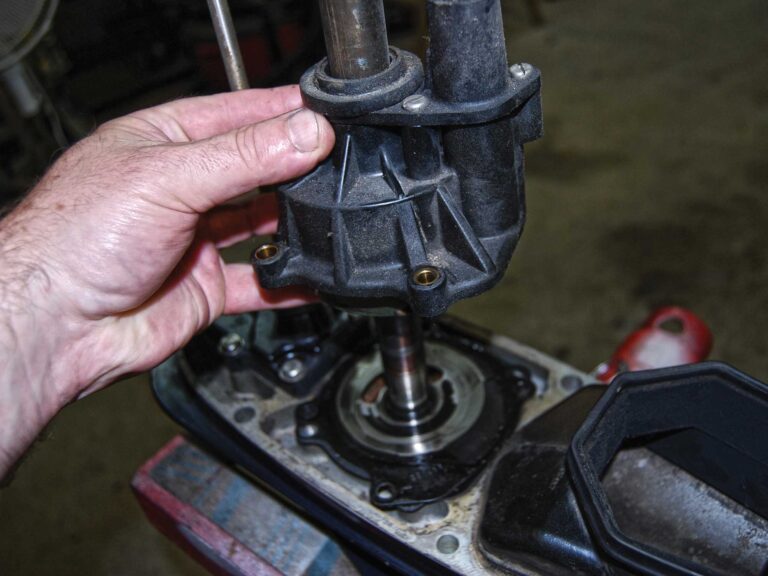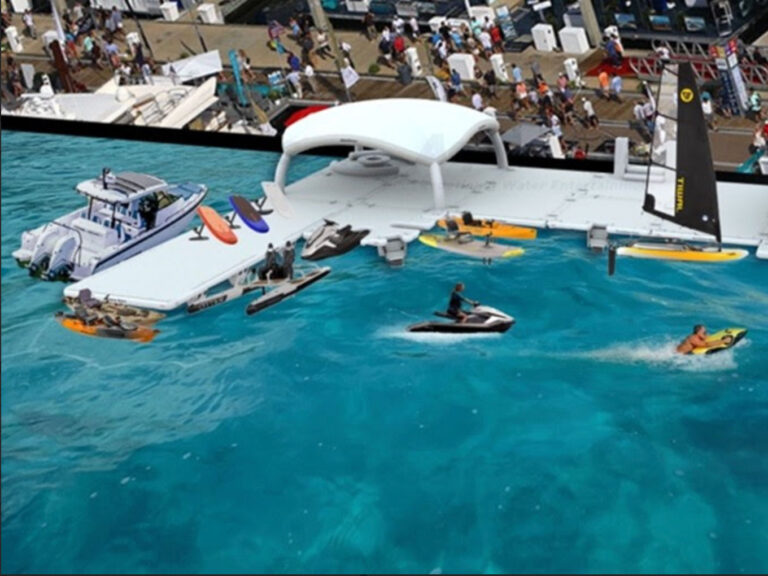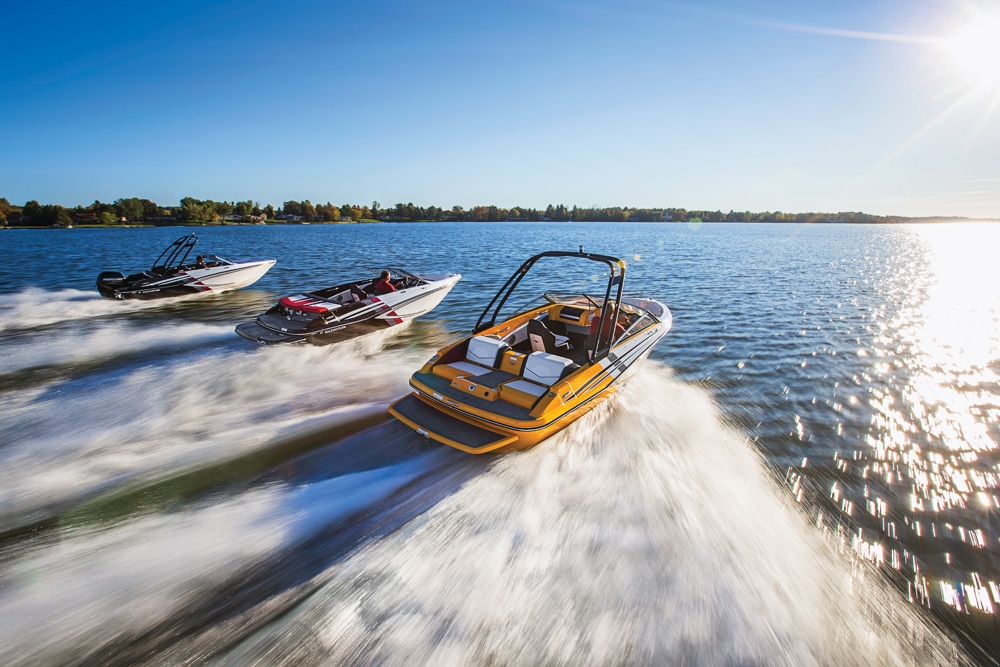
Boat Engine Comparison: Outboard vs Sterndrive vs Jet Drive
Outboard, sterndrive or jet drive: These are the available boat engine choices in today’s runabout market. Glastron recently achieved a trifecta of sorts, becoming the first boatbuilder to offer the same 18-foot bowrider with each power option, which presents us with a golden opportunity — the chance to finally mount a real head-to-head comparison of outboard, sterndrive and jet propulsion. Glastron provided an outboard-powered GTS 180, a sterndrive-powered GTS 185, and a jet-powered GTS 187 for trial on the same day at its test facility in Cadillac, Michigan. We compared performance, dimensions, features and cost to see if one power option would prove superior. We encountered the expected compromises with each powertrain, but there were a few surprises too.
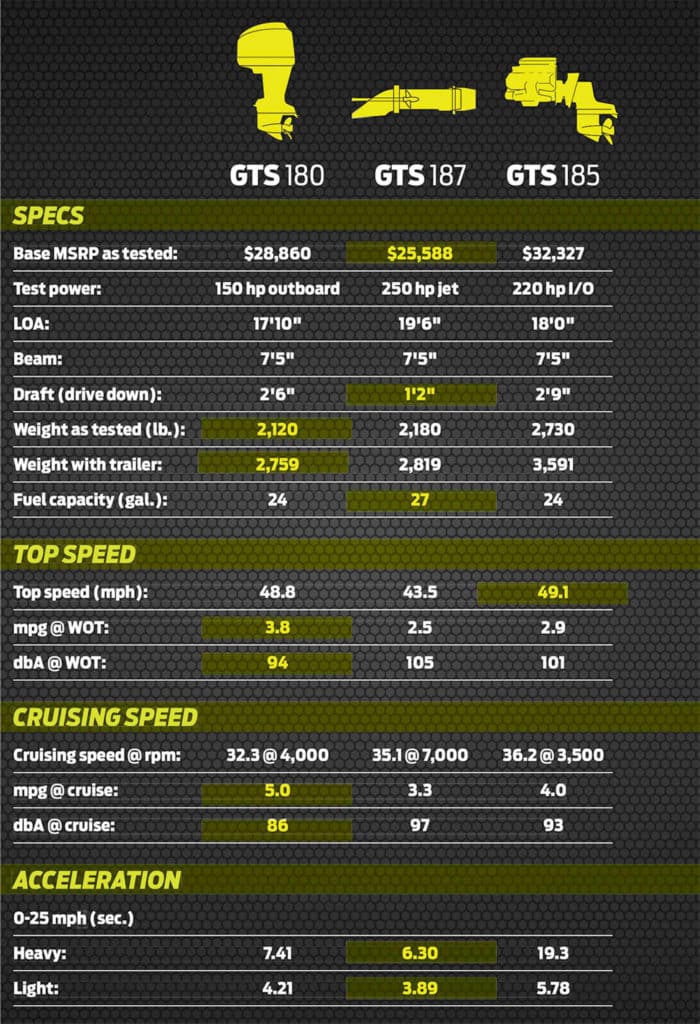
Outboard vs Sterndrive vs Jet Drive
Boat Basics
From the aft seat forward, each of these Glastron boats is exactly the same except for slight differences in controls and instruments. The 18-foot Glastron is a sharp-looking bowrider. It’s designed to compete in the affordable segment of the price spectrum. The fiberglass deck incorporates the bow seating and aft seat base but does not feature a full-cockpit liner. A separate floor, or cockpit sole, is bonded to the top of the fiberglass stringer grid that’s bonded to the hull. The exposed areas of the inner hull are covered with attractive “chain weave” vinyl material. Instruments are presented in deep aluminum bezels above a spider-spoke wheel; the bucket seats have flip-up cushions; and positive pin latches secure the lift-off cushions over stowage in the bench bases. These boats are typical of the breed, but well executed.
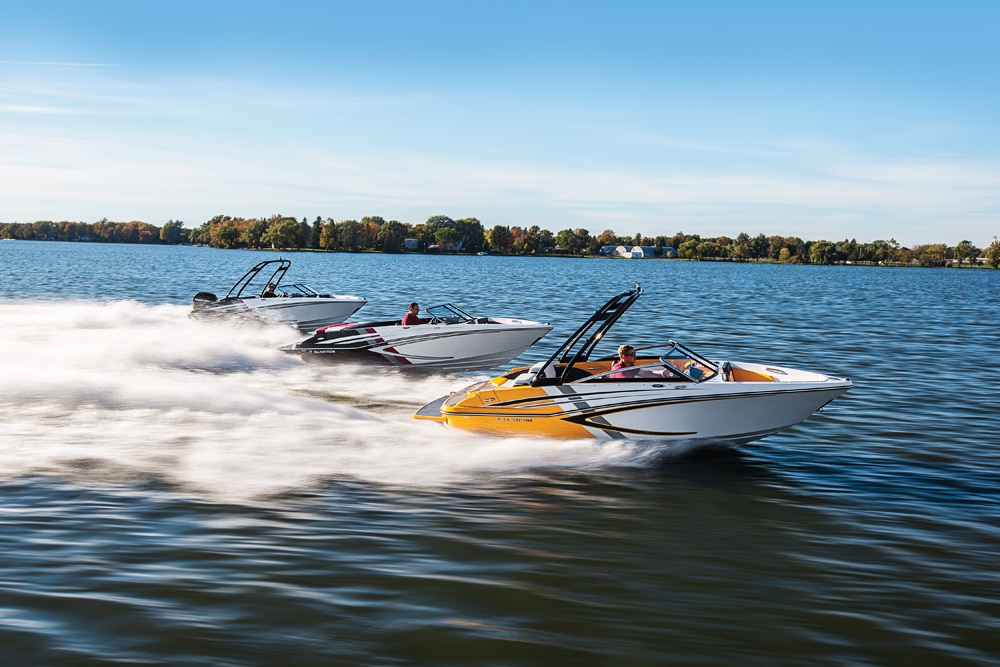
Outboard vs Sterndrive vs Jet Drive
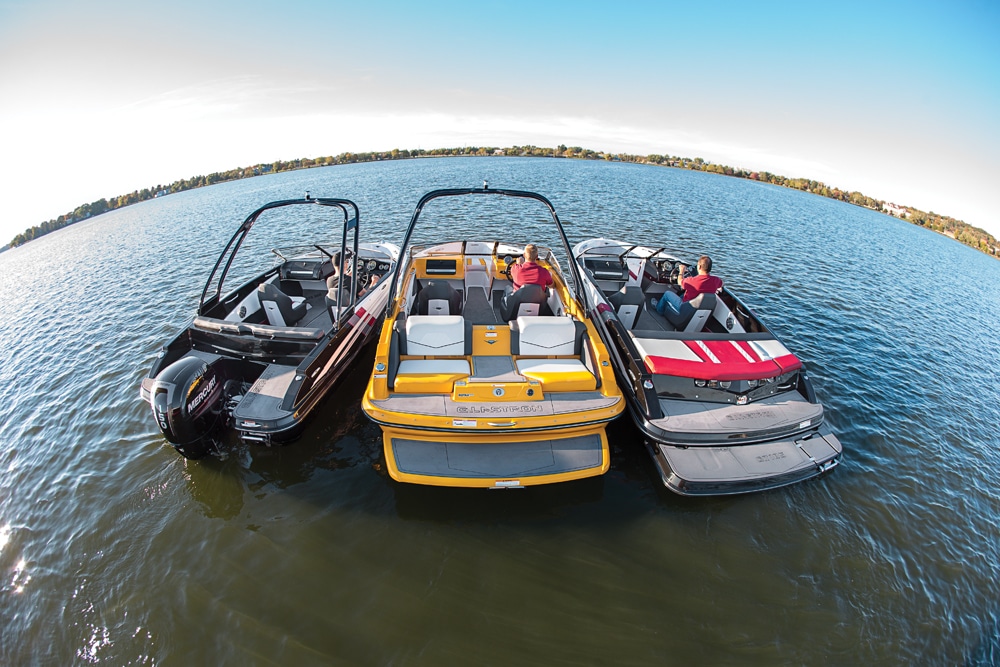
Outboard vs Sterndrive vs Jet Drive
You’ll note that the length overall for each boat is slightly different. The outboard’s transom makes that boat 2 inches shorter than the sterndrive. The jet is 18 inches longer than the other two because its extended swim platform is a standard feature. The jet also carries three more gallons of fuel because it has a different tank shape to accommodate its required in-tank fuel pump.
Our test boats were rigged with the boat engine that is most popular on each model. The GTS 180 featured a 3.0-liter inline-4 Mercury 150 FourStroke outboard. The GTS 185 had a 220 hp MerCruiser 4.3 MPIC under the hatch. The GTS 187 was powered by the 250 hp version of the 1.5-liter, three-cylinder Rotax 4TEC engine, which is supercharged, intercooled and catalyst-equipped. That’s a big spread in power, but testing would reveal that actual performance was pretty close. We conducted performance testing with crew and ballast totaling 700 pounds.
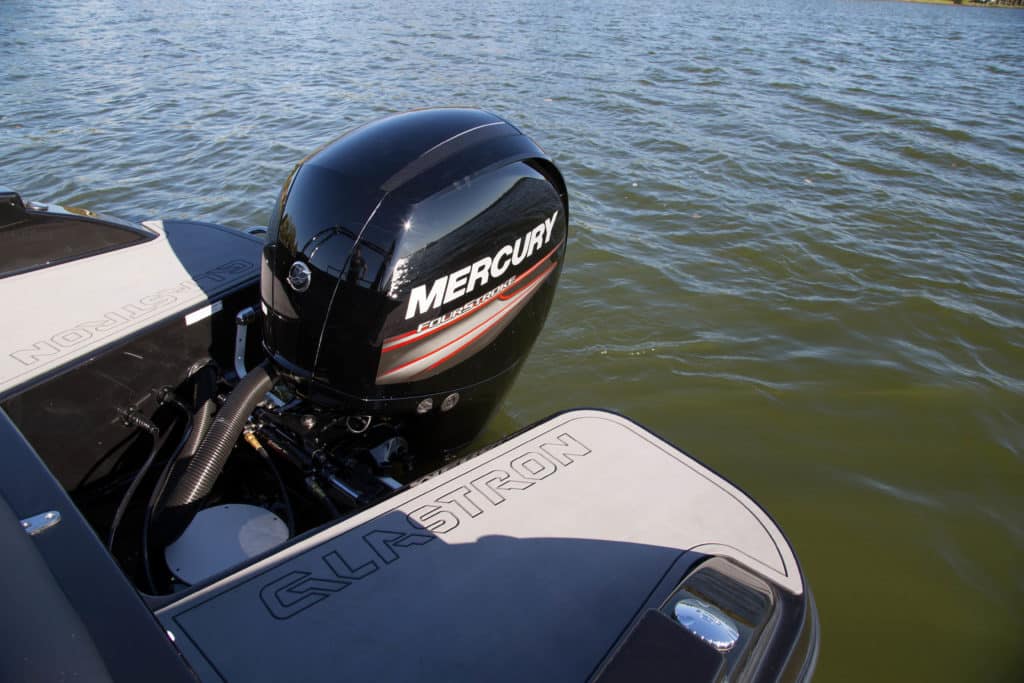
Outboard vs Sterndrive vs Jet Drive
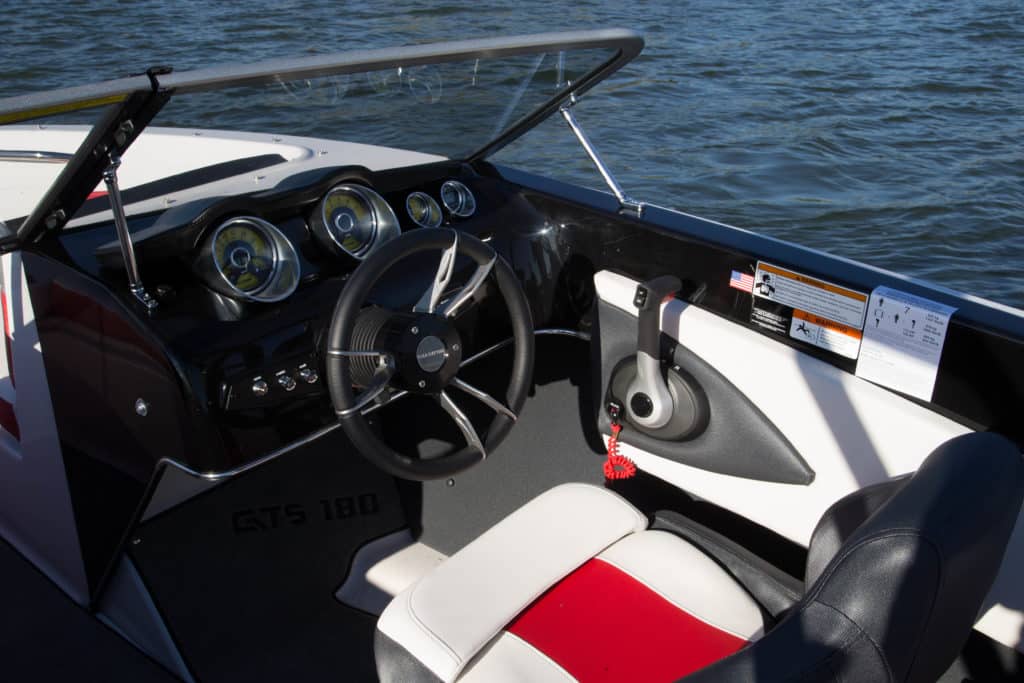
Outboard vs Sterndrive vs Jet Drive
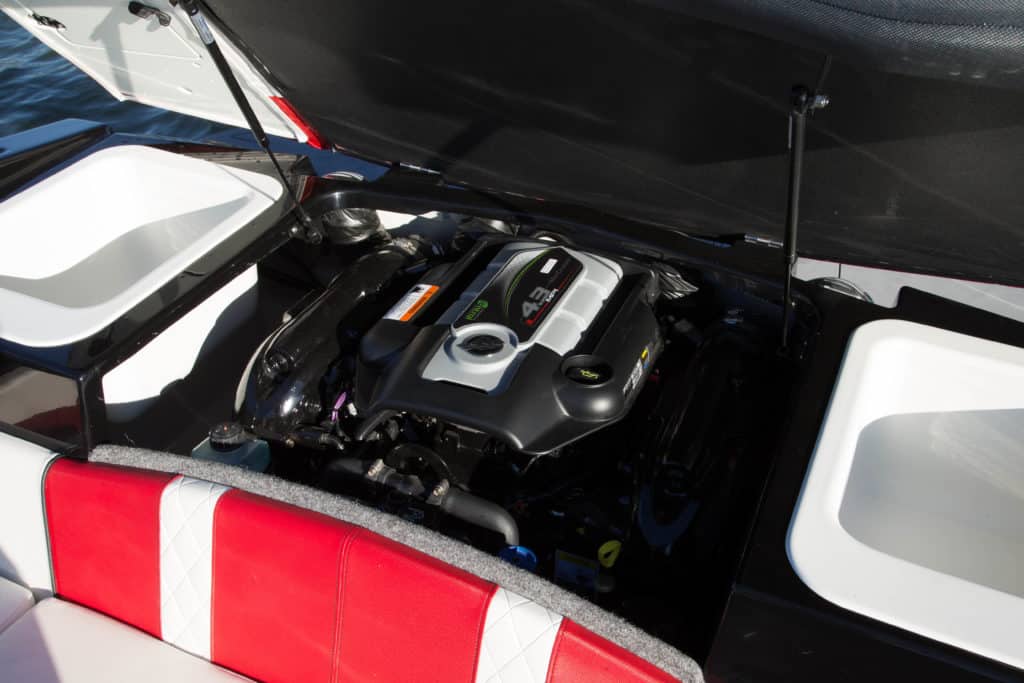
Outboard vs Sterndrive vs Jet Drive
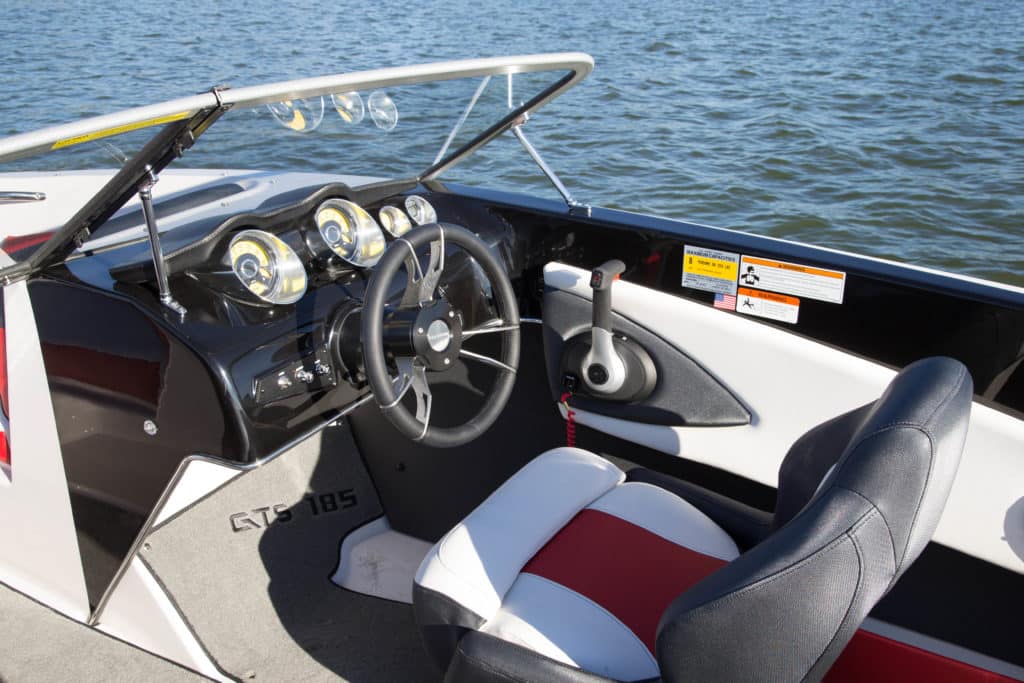
Outboard vs Sterndrive vs Jet Drive
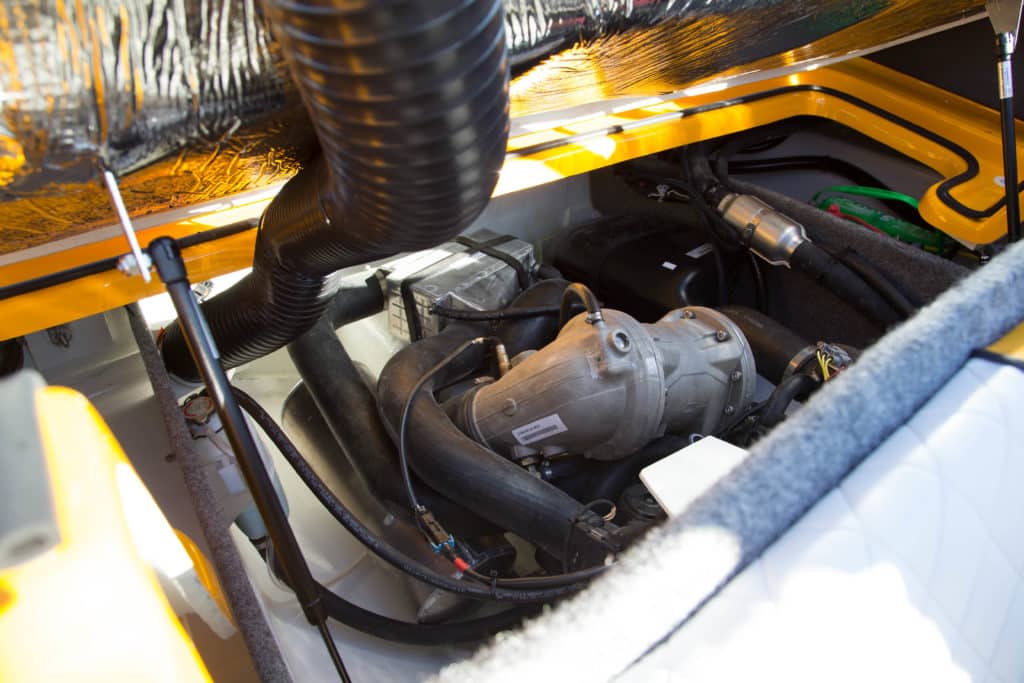
Outboard vs Sterndrive vs Jet Drive

Outboard vs Sterndrive vs Jet Drive
Weight
We used Rec Boat’s tech-center scales to weigh the test boats. There’s a spread of 610 pounds between the outboard, our lightest version of the boat, and sterndrive, the heaviest version, with the jet weighing 60 pounds more than the 2,120-pound outboard-powered boat. This weight difference will affect every aspect of performance and economy.
Performance
Top speeds for the outboard and sterndrive boat engines were very close, at about 49 mph. The jet ran 43.5 mph, handicapped despite its power advantage by its lack of trim, which on the outboard and sterndrive let us raise the bow and reduce drag. It’s important to note that the running surface of the jet-powered GTS 187 is specific — Glastron did not simply drop the jet drive into the sterndrive hull and call it a day. There’s a huge weight difference between the two powertrains, and the thrust angle makes the boat handle differently. We were told the jet hull has much less deadrise forward and less lift aft.
The jet has a clear advantage in acceleration. We tested 0 to 25 mph “light” with one person on board and “heavy” with the equivalent of six 175-pound people on board. The jet simply lifts and leaves when the throttle is punched, blasting off with no bow rise. The outboard exhibits slight bow rise but is only about a second behind the jet to 25 mph. Bow rise blocked our view forward for a moment when the sterndrive accelerated, and with the heavy load the sterndrive was a slug, struggling to get on plane.
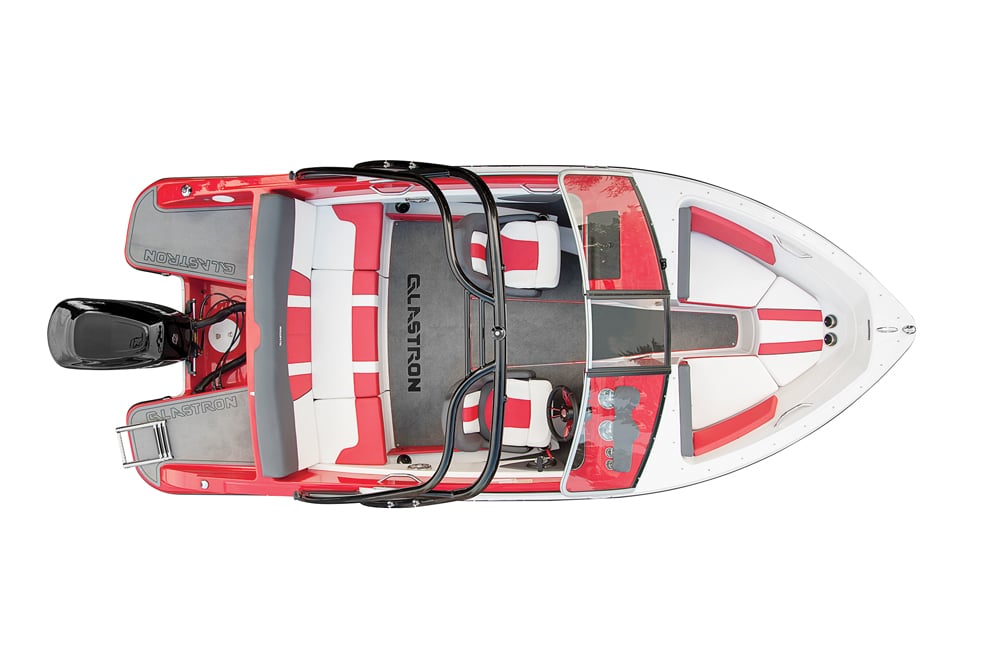
Outboard vs Sterndrive vs Jet Drive
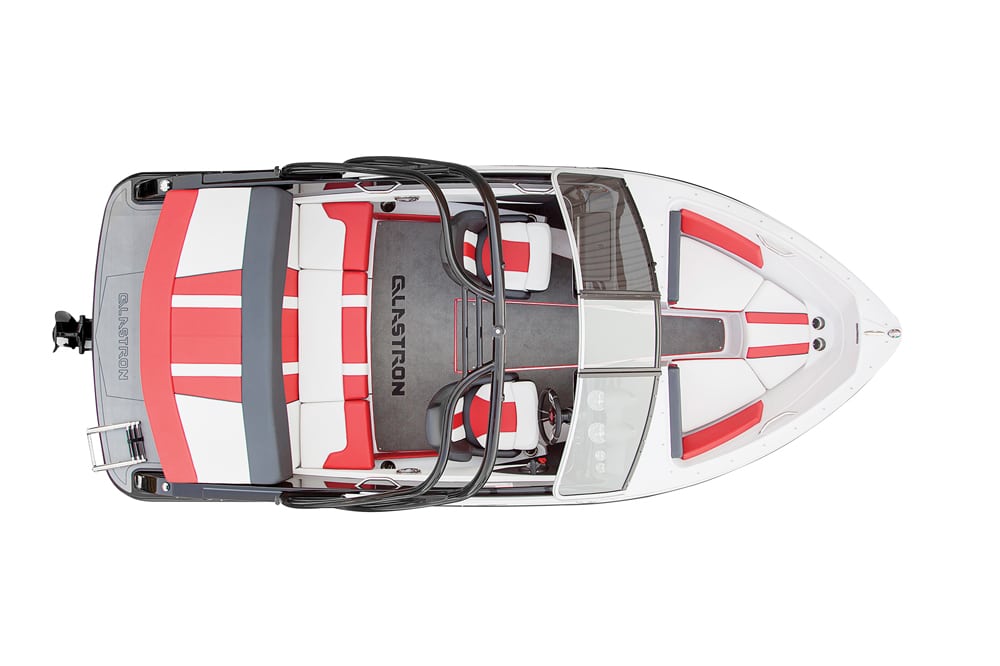
Outboard vs Sterndrive vs Jet Drive
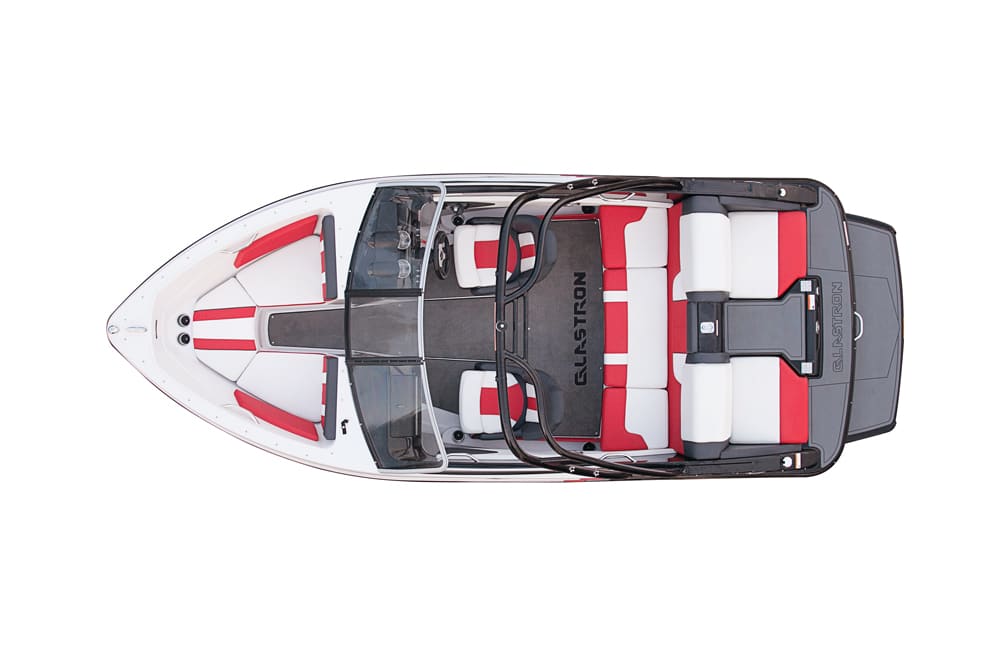
Outboard vs Sterndrive vs Jet Drive
Fuel Economy
That the outboard proved most efficient is obvious — with just 150 hp it can match or exceed the performance of engines making more than 200 hp, as our performance charts show. At cruising speed the outboard manages 5.0 mpg, 25 percent better than the sterndrive and 52 percent better than the jet. We don’t have a good explanation for this beyond the fact that the sterndrive boat weighs 600 pounds more than the outboard, and the jet drive system is less efficient than the outboard’s propeller. Also, while the jet’s appendage drag is less, since no gear case is being dragged through the water, this may result in increased wetted surface of the hull, since it offers no ability to trim the boat.
Note that each of these boat engines has a different operating range — wide-open throttle is 5,000 rpm for the sterndrive, 6,000 rpm for the outboard and 8,000 rpm for the jet — so each also has a different cruising rpm. For this comparison, rather than select each boat’s best possible cruising speed, we picked a “pleasing” cruise speed, because in the real world you are not going to want to wobble along just on plane. At speeds below 7,000 rpm, the jet-powered Glastron felt like it was wallowing just a little. It likes to have more pressure under its hull to feel planted in the water. That happens to be about 35 mph, so we compare the other two boats at a similar speed in the water.
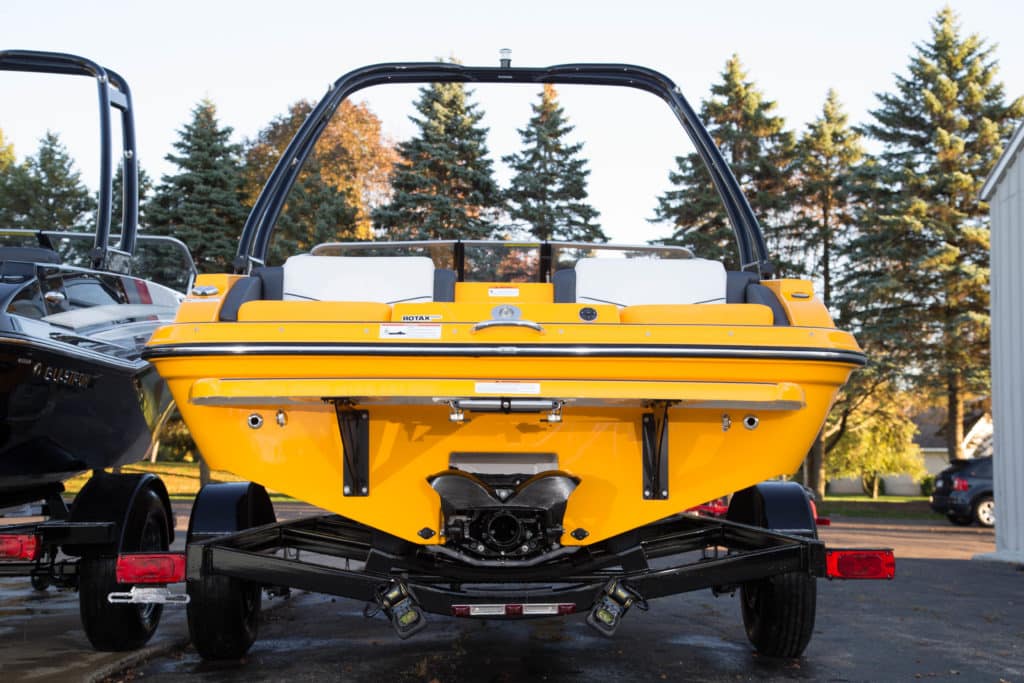
Outboard vs Sterndrive vs Jet Drive
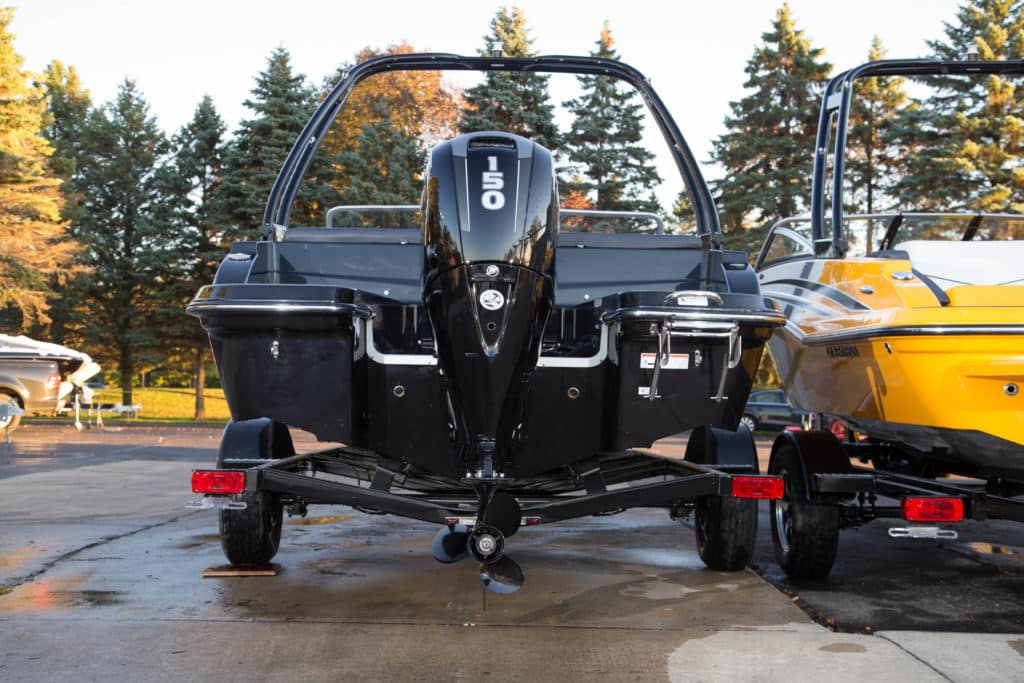
Outboard vs Sterndrive vs Jet Drive
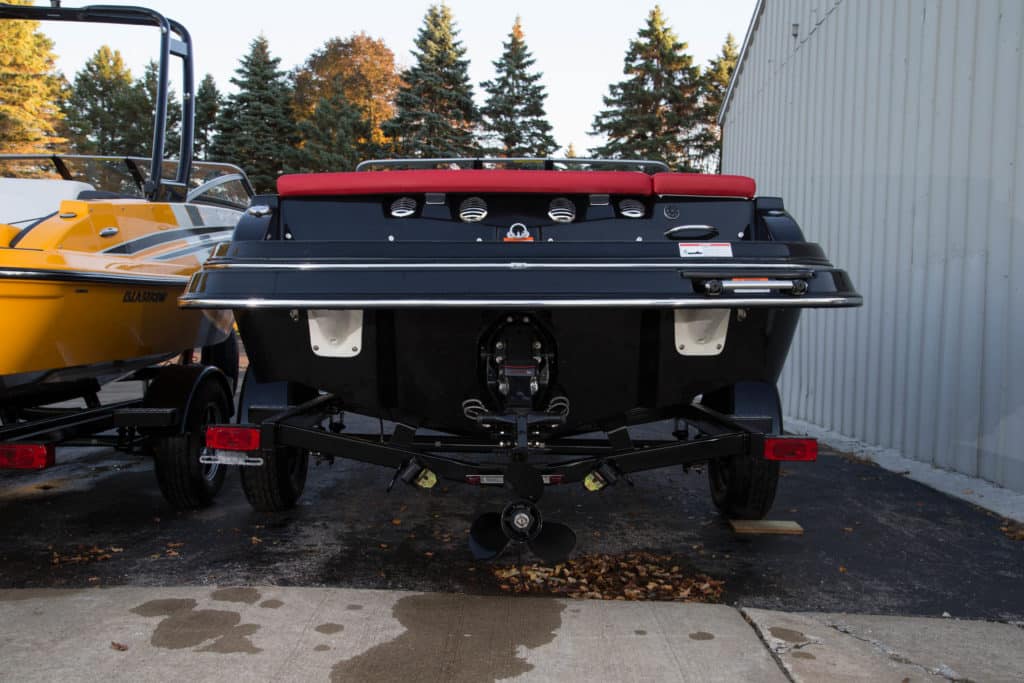
Outboard vs Sterndrive vs Jet Drive
Sound Level
This is another easy win for the outboard. At cruising speed the outboard is 6 decibels (dbA) quieter than the sterndrive and 11 dbA quieter than the jet. The dbA scale is logarithmic, so a change of 10 dbA is a change by a factor of 10. Which means the jet is more than 10 times “louder” than the outboard. An outboard boat engine has many design advantages that keep sound levels low in the boat cockpit. It’s located farther away, on rubber mounts that isolate its vibration from the boat. It’s also enclosed by a tight cowl and can be fitted with an attenuator tuned to significantly reduce intake noise. Both the jet and sterndrive have to comply with U.S. Coast Guard flame arrestor regulations that essentially leave the intake unmuffled. The jet is further disadvantaged because its entire powertrain is mounted within the boat hull, so part of the noise of a jet drive is the flow of water through the pump and the sound of cavitation on the low-pressure side of the impeller. The jet also runs at much higher rpm, and this higher-frequency sound is more irritating to the human brain.
Aesthetics
Choosing a boat is not always a rational decision, and the look often trumps performance, economy and noise. There’s no question a lot of people really like the classic lines of a sterndrive runabout with a big sun pad over the engine and a full-width swim platform. An outboard motor ruins that clean profile, breaks up the platform into a pair of small shelves, and often requires a motorwell that intrudes on lounging space aft. The jet is also inboard, but its little in-line triple engine is much more compact than the V-6 sterndrive engine, and has a lower profile. This creates more styling possibilities aft, and in place of a sun pad, the Glastron GTS 187 has a pair of aft-facing seats with bottom cushions just above the level of the boarding platform. The jet powertrain is rather long, and the area below the center aft cockpit seat is devoted to service access to the front of the Rotax engine and the electric fuel pump, rather than stowage.
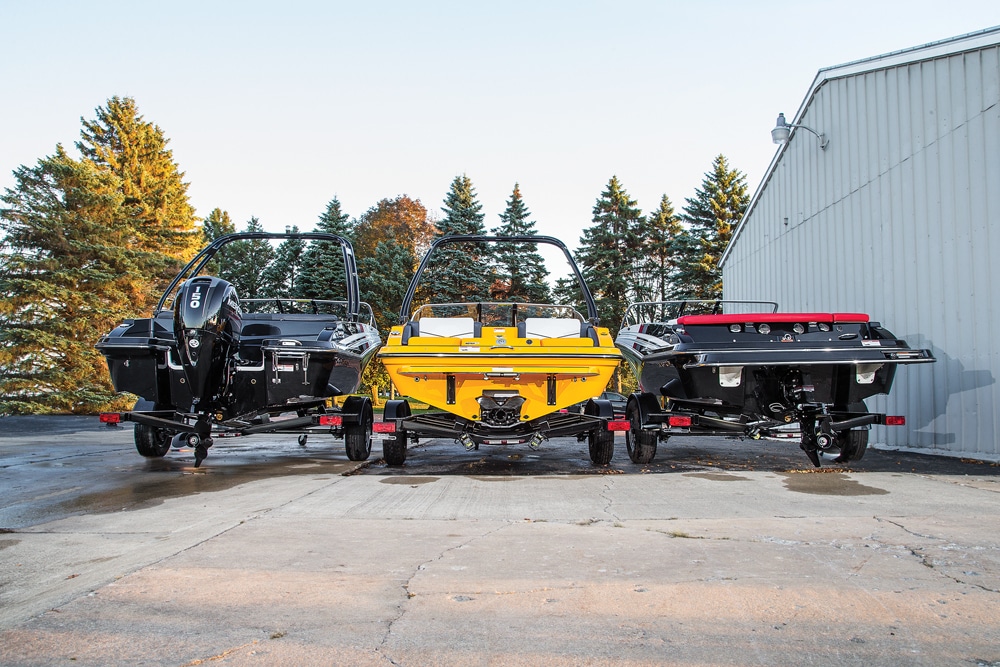
Outboard vs Sterndrive vs Jet Drive
Operation
It took a sandbar on Lake Cadillac to remind us of a key virtue of jet power. We “polished the prop” of the sterndrive when we hit bottom. The jet, which draws just 14 inches at rest and perhaps 6 inches on plane, would have skimmed right over the bar. Research shows that owners also value the simple operation of a jet-powered boat — controls are limited to forward and reverse, and steering. There’s no trim to think about, no prop to ding up. Compared with the outboard and sterndrive, the jet boat engine is mechanically simple. However, because the jet pump has no rudder, it does not track well at no-wake speeds and, until you get the hang of it, can be much more difficult to control around a dock or when loading a trailer. The jet has very quick steering — just 270 degrees lock-to-lock on the wheel compared with 3.6 revolutions for the outboard and 4.5 for the sterndrive — which requires some reflex adjustment. The jet is willing to make buttonhook turns that would send your crew crashing across the cockpit. Let’s just say it’s very agile.
The trimability of the outboard and sterndrive enhance performance and economy, but the aluminum props on our test boats would blow out if we tried to make an assertive turn without first trimming back down, so that’s one more thing to think about at the helm. Submerged sandbars, rocks and stumps pose a potentially expensive risk to props and drives. You are less likely to suck sand or gravel into a jet pump and damage the impeller and sacrificial wear ring.
The outboard is so quiet you can have a normal conversation at cruising speed. The V-6 sterndrive engine vibrates quite a bit at low speeds and sounds relatively coarse at all speeds. The jet is obnoxiously loud, unless you’ve being riding a personal watercraft and don’t know any better.
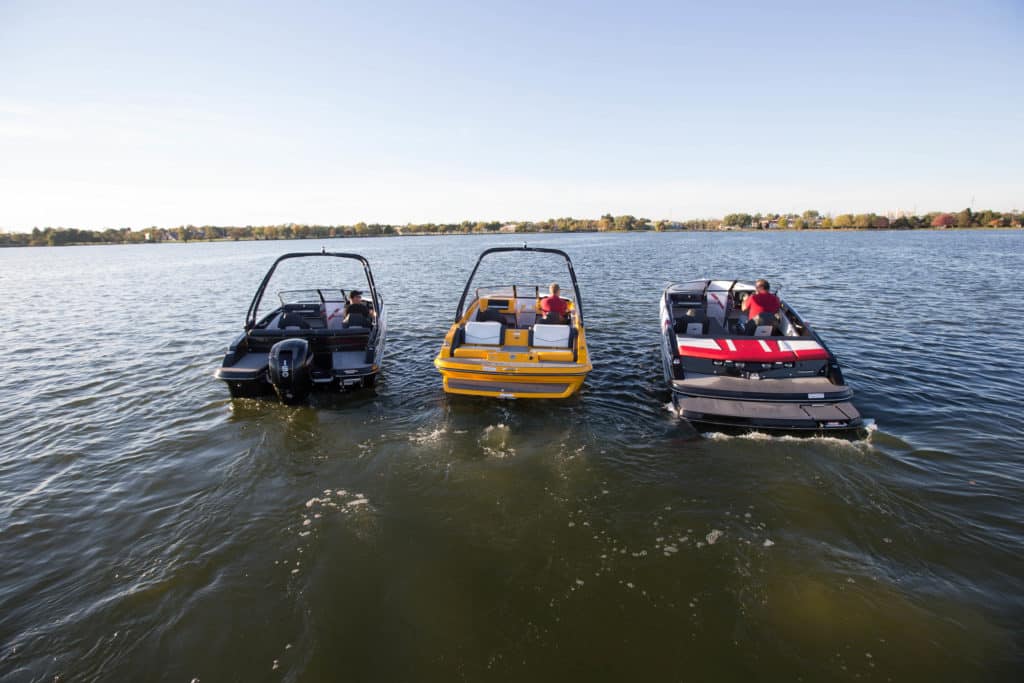
Outboard vs Sterndrive vs Jet Drive
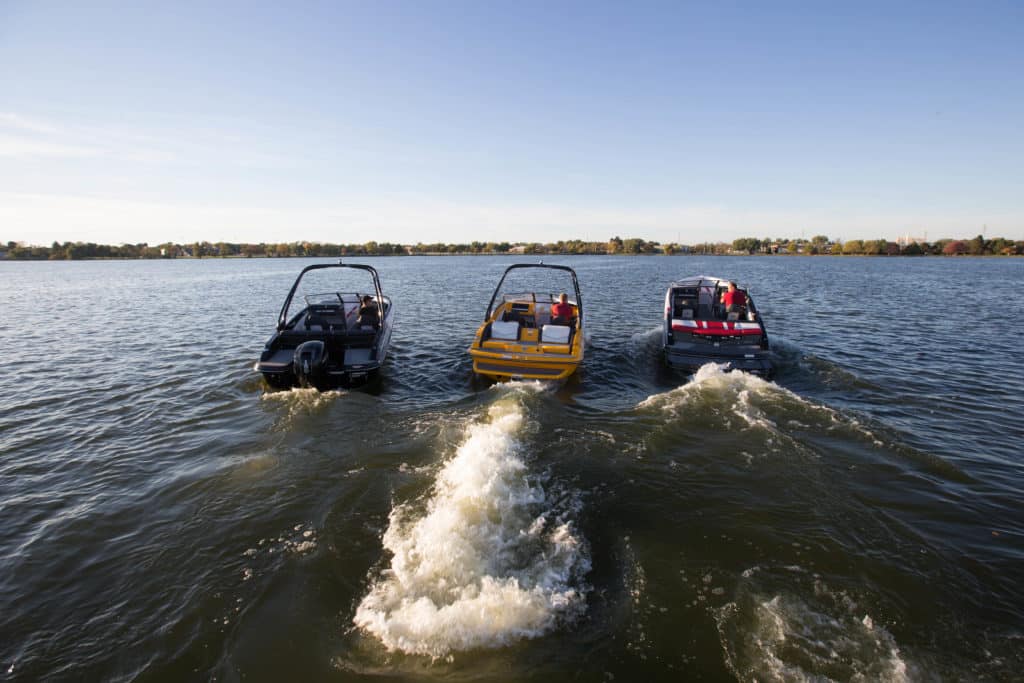
Outboard vs Sterndrive vs Jet Drive
Conclusion
On paper, the outboard power system is a clear winner. In this comparison, the Glastron GTS 180 with a Mercury 150 has the lightest weight, the best fuel economy, the quietest cockpit, and performance that matches or exceeds those of the sterndrive and jet. But the outboard loses big points for looks and the “livability” of its stern area. The jet is the least expensive, accelerates fastest, is easy to operate and has a clever lounging area, but it’s thirsty and noisier. In this comparison, we think styling is really the only reason to choose the sterndrive-powered boat. We say, “Wise up, America!” and buy the outboard boat engine.


